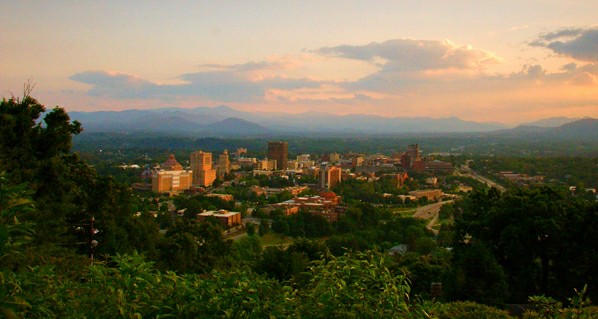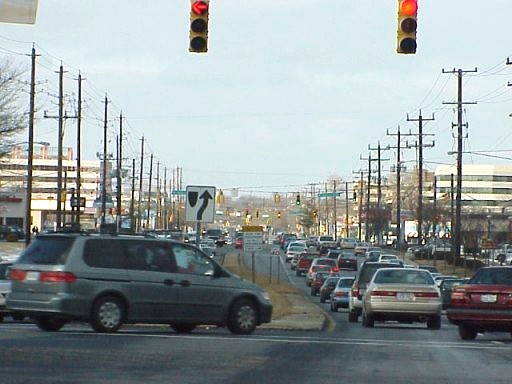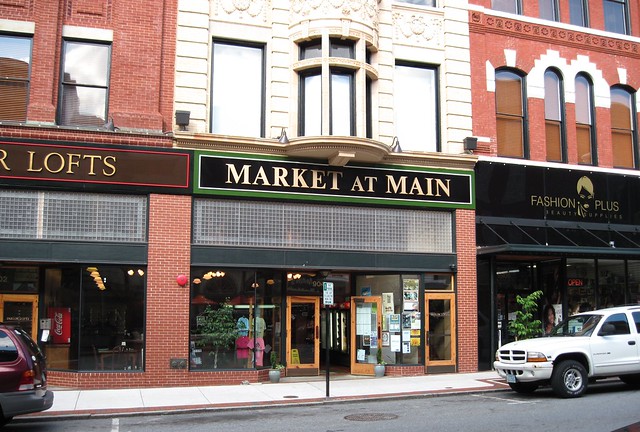Do Greener, Healthier Cities Need an 'Elevator Speech'?
For better or worse, we live in the age of the sound bite, when even the most intellectually complicated subjects must, to be understood, be simplified to a couple of easily communicated sentences. It's all about hyper-short attention spans, the 140-character Tweet, and the "elevator speech" that you can present as you and your audience descend three or four floors on your way to exit the building for lunch.
Which prompts the question posed last week by my friend Hazel Borys on her planning firm's excellent blog, PlaceShakers: Why should city planning matter to people who aren't urban designer types? How can you make the case as briefly and simply as possible?
Hazel's answer to her own question is that sprawling development simply costs too much to maintain; we need better planning because compact communities and neighborhoods save precious fiscal dollars – a conclusion that she then proceeded to elaborate in a 55-point, well-annotated treatise. That requires a heck of a long elevator ride, no? That's unfair of me, of course: Hazel was just letting us know that she does, indeed, know what she's talking about. She can give you the one-paragraph version or the treatise, which, by the way, is an excellent summary of the economic case for smart growth.
So what's my elevator speech? My answer is that it varies, because communities differ, and so do their real and perceived needs. I agree that we must both communicate succinctly and be able to back up our positions with facts and analysis. But, after that, it gets more complicated.
Hazel makes a great case about the advantages of, for lack of a better word, "urbanism" over far-flung sprawl development. True enough. But, for me, building greener, healthier cities needs to be about so much more than urbanism and city planning. Those are important tools to keep available in the box, to be sure. Some places need them badly. But there are also places with plenty of urbanism that still feel ugly, soulless, overwhelming and, by the way, environmentally damaging.
Our sprawling places need much more walkability; but some of our most urban places need more balance – for example, more nature, more beauty, and/or more human scale.
I have many friends in the smart growth movement who believe that making our communities more sustainable is all about more city density, more urban infill, fewer cars, and not too much else. I might have bought that at an earlier point in my career. But now I believe our community solutions cannot stop there but must be about other things, too. The trick is to find the right mix, tailored appropriately to the circumstances of particular communities.
In the Washington, DC region where I live, for example, the big issues of public concern are traffic congestion, gentrification in the inner city and, to a degree, the loss of familiarity and character as our neighborhoods evolve. For here, this is my elevator speech:
In the region as a whole, we need to find a way to grow and prosper that doesn't put so many cars on the road and that sits more harmoniously with nature. In the inner city, we need to preserve and strengthen our older neighborhoods, and to do so in a way that benefits longtime residents as well as newcomers. These things are easier said than done, but that's why we need more people working on them and carefully putting better approaches into place.
Too vague? For this lawyer who is used to detail, it sure seems so. But I do think my little summary speaks to the concerns of people in our region, expressing (perhaps too) briefly some objectives for meeting their self-defined needs and those of the planet at the same time. I hope it also shows some humility, because we really don't have all the answers that we need. If we can agree on the objectives, I don't have a problem with debating the details until we get it right.
For the long version of what I personally believe, see my book, People Habitat, or even my article from a couple of months ago, "Ten Questions We Should Be Asking Our Communities." Urbanism is only part of my particular answer. I believe that, if we stop there, we aren't really doing enough to produce lovable, sustainable places. Replacing crappy sprawl with crappy smart growth doesn't really improve things.
As I write, I can hear the voices of some of my critics saying that I shouldn't "dilute the message" of smart growth and urbanism. One government official even went so far as to tell me – a mere10 minutes after meeting me last spring – "You're giving aid and comfort to the enemy," presumably by having the gall to suggest that additional density in already-urban places should be applied carefully and sometimes be moderated in deference to nature and human scale. So be it. (And, by the way, government officials should be careful about calling some of their constituents "the enemy." I let it go.)
Back to the elevator speech, it would need to change in a different place: for example, in a small city or town whose vitality has been sapped by megastores out on the Interstate, it might be about developing and supporting a new local economy, about strengthening the old Main Street with residents and businesses more suited to today than yesterday. The traffic congestion that so frustrates DC-area residents might be a nice problem to have in a place now plagued with empty storefronts. Likewise for a larger, post-industrial city such as the finally-rebounding Detroit or Cleveland: they need more inner-city jobs before they can support more urbanism.
Whatever the right prescription – and the right sound bite – for a particular community today, I can't escape the sense that we as a country unwittingly made some terrible mistakes in too many places in the last century. We went way too far in our love affair with cars, allowing them to take over both our rural landscape and the city streets that once were built to serve pedestrians and transit. We tragically disinvested our older neighborhoods and towns. And we simply forgot about nature, taking it for granted until there was nothing left in many places – suburbs and downtowns alike – but pavement and haphazard buildings. It's now in all of our interests to fix the damage.
This brings me to what is perhaps my favorite one-sentence summation of what we need to do in many places. It comes from my friend and mentor Jonathan Rose, one of our country's preeminent green developers: "Our mission is to repair and strengthen the fabric of cities, towns and villages, while preserving the land around them." That's pretty darn good.
What's your elevator speech? Hazel and I would both like to know.
Move your cursor over the images for credit information.



